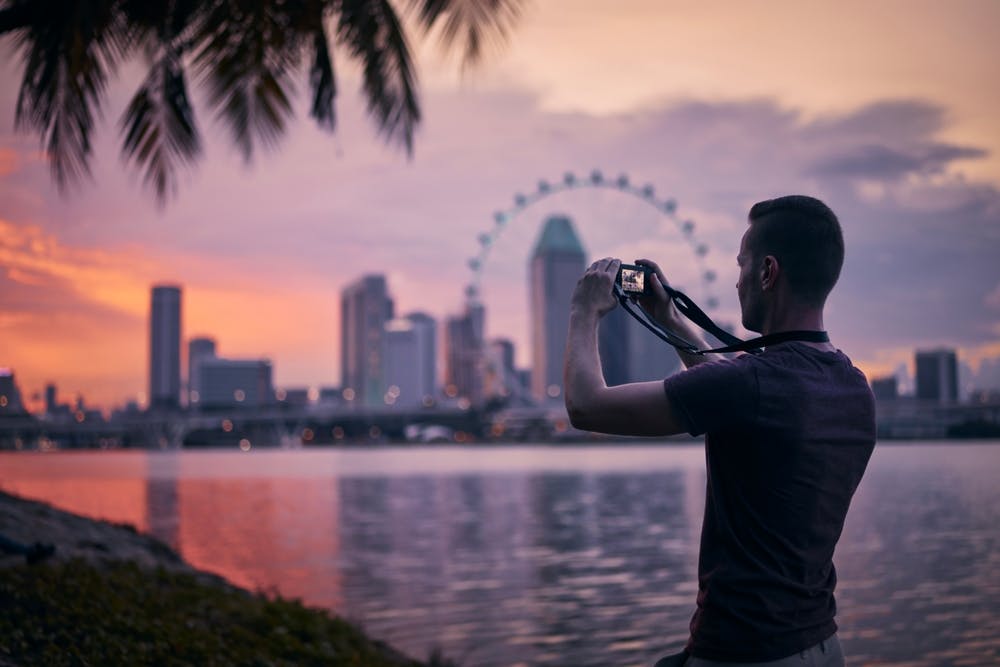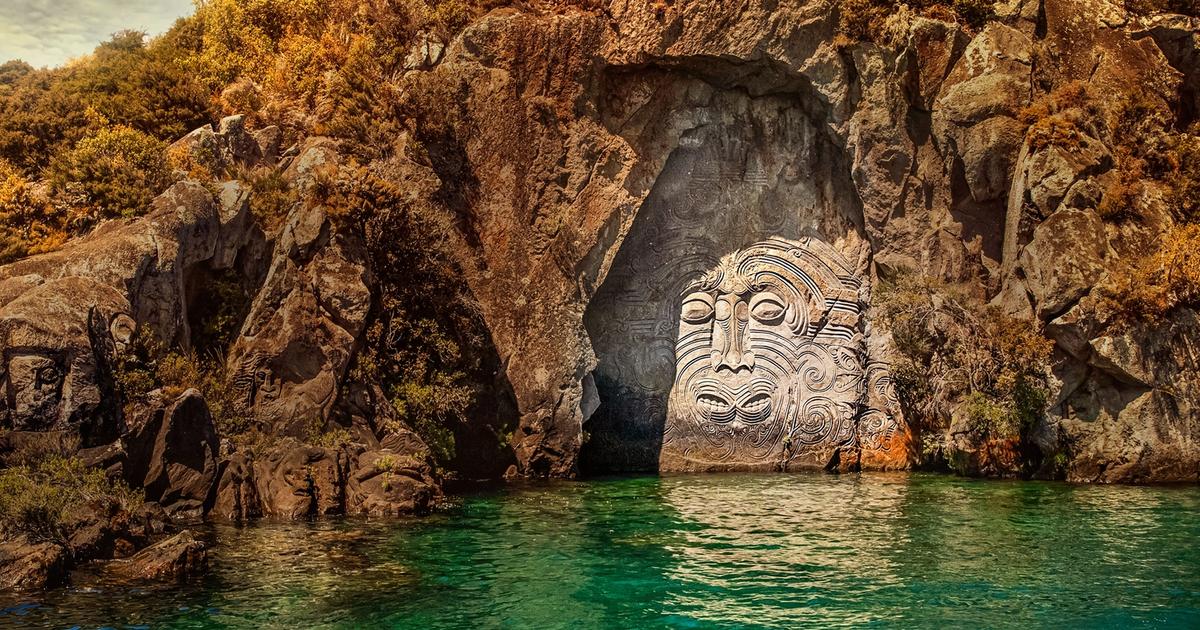Travel to Singapore and Track the Country’s Evolution from Sleepy to Crazy Rich
Anyone planning to travel to Singapore in the 21st century knows to expect sleek, modern skyscrapers. Just 200 years ago, however, Singapore was a sleepy village. The city-state’s blazing progress since then can be traced via its diverse architecture.
On a verdant hill in Singapore, a giant rain tree loomed above me, its crooked branches cloaked in ferns. Although I happily loitered there, observing this natural splendor, had I done the same in a different era I may have been ambushed. In the 14th century, this place was known as Bukit Larangan, or Forbidden Hill. Home to a Malay Royal palace, it was off-limits to those without an invite from the kings who ruled Singapore long before it bloomed from a fishing village into Asia’s richest country.
Threads of this remarkable tale are woven into the architecture of Singapore. I visually tracked the nation’s evolution by exploring its historic forts, temples and colonial buildings, and admiring the space-age structures that symbolize its contemporary success.
Nowadays, Forbidden Hill is a tourist attraction called Fort Canning Park. It has walking trails, manicured gardens, a small museum, a 19th century British fort and remnants of the first home of English statesman Sir Stamford Raffles, the founder of modern Singapore.
Modern Singapore begins in the 19th century
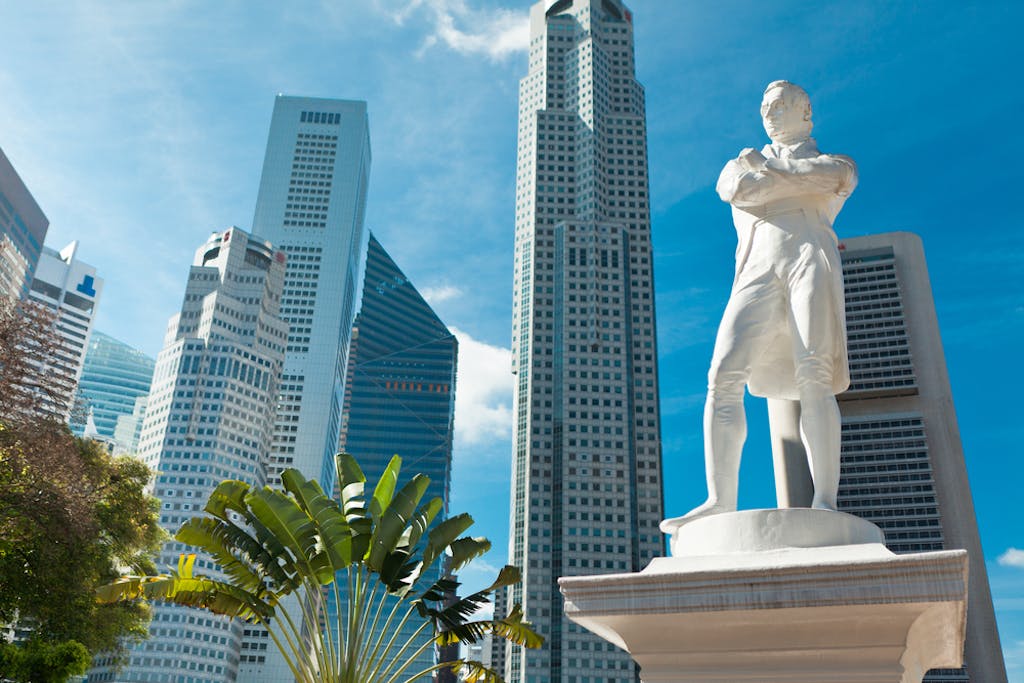
Raffles arrived here in 1819 tasked with expanding British influence in Southeast Asia. What happened next is embedded in the neoclassical façade of one of Singapore’s best cultural tourism attractions, the Arts House. When I first savored the creative exhibits at this facility, its history was lost on me. Later, I returned with the knowledge that it was formerly the home of Temenggung Abdul Rahman, the Malay man who paved the way for colonial Singapore.
Rahman was a leader of the Johor Sultanate, which then controlled Singapore. In 1819 he permitted Raffles to establish a British settlement. To fast-track this colony’s development, Raffles created a free trading port, implemented a law-and-order system, and enacted a zoning plan that shapes Singapore to this day.
He segregated communities by race, believing this would foster peace. Three of those ethnic enclaves are now key tourist attractions — Chinatown, Little India and Kampong Glam. Of Singapore’s 5.6 million people, about 74% are ethnically Chinese, 14% are Malay and 9% Indian.
Kampong Glam, Singapore’s oldest Malay community, predates the arrival of Raffles. As I wandered streets with such names as Arab, Baghdad and Muscat, I discovered this neighborhood is anchored to two Islamic structures. Gilded domes top the splendidly photogenic Sultan Mosque, which dates to 1826. The adjacent Malay Heritage Centre, built in 1840 as a palace for the Sultan of Johor, taught me Singapore’s history. (The center is closed at the moment; check the website for information.)
From the 1830s onward, a wave of migrants flowed into this colony. To achieve Raffles’ lofty goal of creating a modern city, the British needed cheap labor. Thousands of men from India and China came to work in mining, shipping, construction and agriculture, and others started their own businesses.
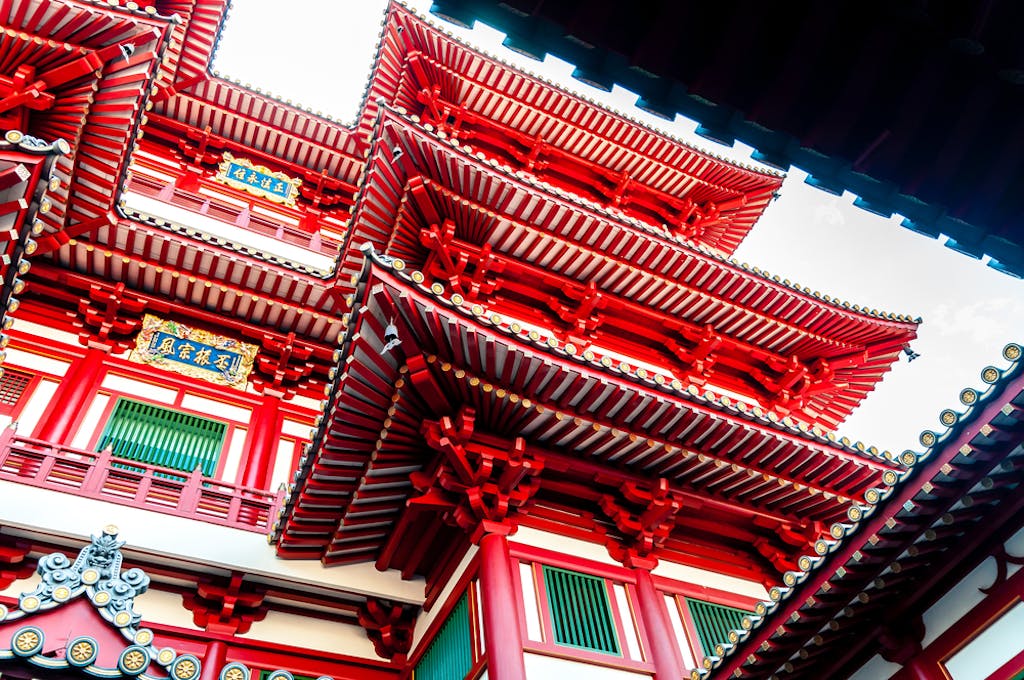
Those Chinese settlers in 1839 built what has become a popular tourist attraction, the polychromatic Thian Hock Keng temple. In its timeworn prayer hall, I inspected a hand-carved wooden statue of the elegant Mazu, Goddess of the Sea. It was to her that Chinese migrants prayed for safe passage on the ocean journey to their new home.
While the Chinese community has shaped modern Singapore more than any other, a comparatively tiny group has had an outsized influence. Just 6 miles or 1 kilometer north of that temple, I was given a tour of the Armenian Apostolic Church, built in the 1830s. This graceful, whitewashed structure has a small museum that explains how an Armenian cohort of less than 100 residents shaped Singapore during the 1800s and early 1900s.
Armenians spread Christianity, pioneered Singapore’s orchid farming industry and, in 1845, created what remains Singapore’s dominant media outlet, the Straits Times newspaper. The men behind that firm, the Sarkies brothers, also opened arguably Asia’s most famous hotel, Raffles. Each day, droves of tourists visit that five-star property to admire its lavish neo-Renaissance design.
Where the wealth comes in

This grandeur underscores the wealth that had accumulated in Singapore by the late 1800s. It was a village no more. Most of these riches stemmed from its thriving port, which became a lure for pirates. In 1879, Singapore’s British government built Fort Siloso, a commanding military structure just off the mainland on Sentosa Island.
Tourists now flock this lush isle for its sandy beaches, luxurious resorts and theme parks. I visited just to wander Fort Siloso, inspecting its giant cannons, climbing into its bunkers and reading its dark history at a petite museum.
Ultimately, this fort’s key test came not from seafaring pirates but a World War II land invasion by the Japanese. Fort Siloso was occupied from 1942 to 1945 and converted into a prisoner-of-war camp. Once the Japanese retreated, Singapore began taking baby steps toward independence from Britain.
Finally, in 1959, it achieved self-government. Singapore was already among Asia’s most affluent nations. But its first Prime Minister, Lee Kuan Yew, saw vast untapped potential. He introduced low business taxes, liberal immigration rules and, most important, absolute free trade. By the end of the 1960s, Singapore had boomed into a regional hub of manufacturing and finance.
But ingrained corruption was holding it back. To tackle this, Singapore poured resources into its Corrupt Practices Investigation Bureau. As I learned while following Graftbusters’ Trail, a marked walking route past seven Singapore sites tied to this history, that bureau targeted even the biggest white-collar crooks.
For many years, they did so based in perhaps my favorite building in all of Singapore. I adore the rainbow-colored shutters of the old Hill Street Police Station, which is now a magnet for photo-snapping tourists. Just a few minutes’ walk south from there, I encountered a towering statue of Sir Stamford Raffles, by the edge of the Singapore River.
A far larger monument to Lee Kuan Yew, called the Founders’ Memorial, is being developed. This sprawling site, which will have a museum, amphitheater and walking trails, is at East Bay Garden, opposite the two architectural projects that best exemplify Singapore’s success.
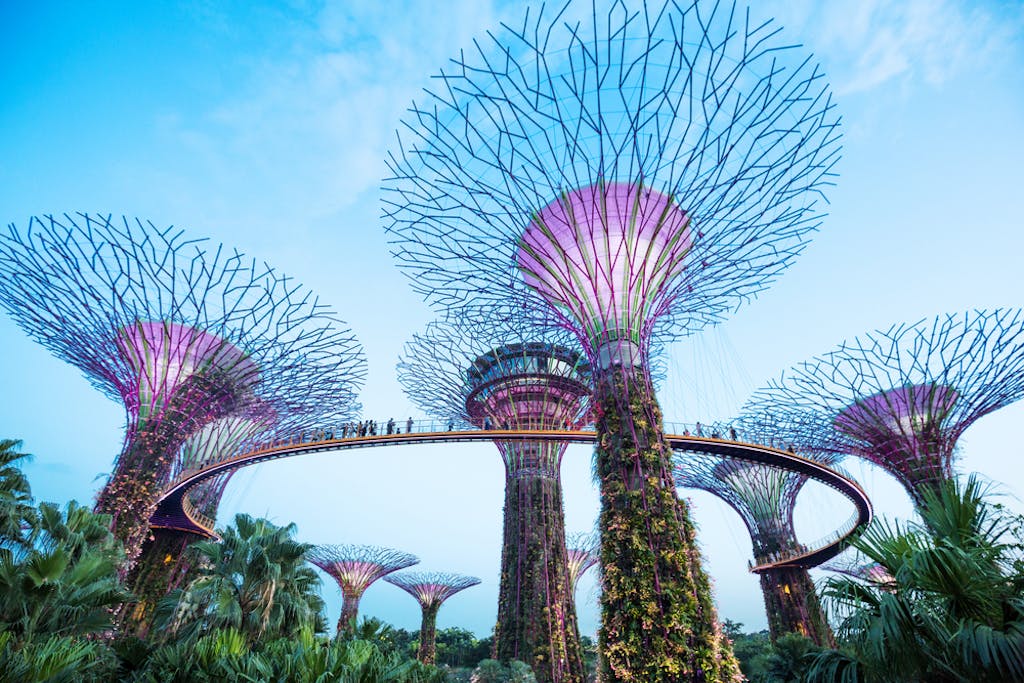
In 2018, when Hollywood blockbuster Crazy Rich Asians spotlighted the country’s wealth, its trailer featured the astounding tourist attractions, Gardens by the Bay and Marina Bay Sands. Both were built more than a decade ago yet look as though they were plucked from the future.
The former is a huge botanic garden decorated by 165-foot-tall super trees — metallic towers draped with plants and decorated by colorful lights. The adjacent Marina Bay Sands is a resort of three 55-story towers, crowned by a nearly 500 foot-long rooftop pool. Swimming there has become a bucket-list travel experience for many people who travel to Singapore. Thousands of tourists each day float in its waters, looking out across the Singapore skyline. Curious, I did the same.
Laid out before me, amid this cutting-edge cityscape, were dozens of sites that revealed Singapore’s evolution. The forbidden hill of Malay Kings. The former home of Raffles. The religious sites built by Chinese, Indian and Armenian migrants. The police station that helped release Singapore’s full economic force. And countless towers that scrape the sky, etching the tale of a village that grew into a city and became Asia’s richest nation.
Fascinated by architecture and design? Explore Singapore’s landmarks with one of these Asia itineraries.



